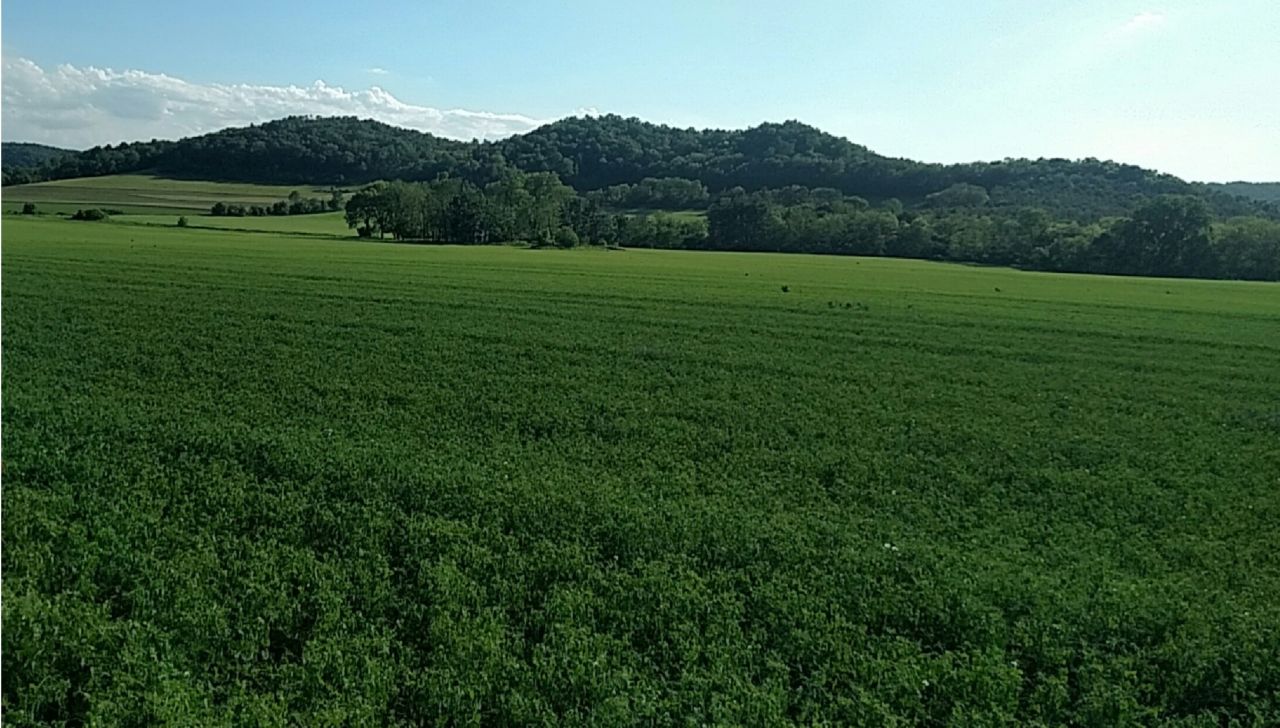Minnesota
Should Minnesota compensate farmers for buffer land?

ST. JAMES, Minn. (AP) — Harold Wolle has grown corn and soybeans on his farm near St. James in southwest Minnesota since 1976. Lately, Wolle has been growing brome grass, too. But it’s not for sale.
To comply with a landmark clean water law passed in 2015 under Gov. Mark Dayton, Wolle — a former president of the Minnesota Corn Growers Association, a trade group — planted two acres of the grass in 2017 to serve as a buffer between his crops and a drainage ditch.
The law requires such buffer strips to reduce the amount of fertilizer and other chemical runoff seeping into waterways. It also started a rancorous fight between farm groups and state government over the cost of taking land out of production, the effectiveness of the regulations — and their implementation.
The nonprofit news outlet MinnPost provided this article to The Associated Press through a collaboration with Institute for Nonprofit News.
That battle has since cooled, especially after DFL Gov. Tim Walz took office, and compliance is high. Yet some agricultural trade groups continue to push for a substantial change to the program: to get paid in some fashion for the land used as buffers.
The Corn Growers have pushed a $50-an-acre tax credit at the Legislature, which Walz has supported. That proposal, or similar ones, also drew endorsements from many DFLers, Republicans and ag groups. Yet none has become law.
The Legislature did approve a different tax break for farmers — on property taxes used to pay for local school bonds — that has been celebrated by many in agriculture. But Wolle said farmers haven’t given up a drive to pass a buffer tax credit. “There’s a general level of dissatisfaction with the buffer program and how it came to be,” Wolle said. “That there is no compensation and there is no tax relief for those acres that were put in.”
The buffer law was one of Dayton’s chief efforts to clean up water throughout the state. The quality of groundwater, lakes and streams are often poor in southern Minnesota and other places where pollution from agriculture is high. The law requires 50-foot strips of grass or other buffer vegetation along lakes, rivers and streams and 16.5-foot buffers along ditches to help filter phosphorus, nitrogen and sediment. There are exceptions and alternative practices allowed in some circumstances.
About 98 percent of land next to regulated waters is now compliant with the buffer law, according to Tom Gile, the resource conservation section manager at Minnesota’s Board of Water and Soil Resources (BWSR). Initially, Dayton and his administration were criticized for not getting enough input from farmers in crafting and implementing the regulations. The rules have since been tweaked to offer farmers more flexibility.
Still, during his campaign for governor, Walz promised to take a look at the law and endorsed the concept of a tax break for buffer land. (Republican candidate Jeff Johnson promised to scrap the buffer regulations altogether and start over.) And once in office, Walz proposed a $50-an-acre tax credit program for buffer land, an initiative that would have cost $15.25 million per year once fully up and running.
Walz was not the only elected official with a buffer proposal during the 2019 legislative session. Sen. Torrey Westrom, an Elbow Lake Republican who chairs the Senate’s Agriculture, Rural Development and Housing Finance Committee, introduced a bill that would direct the state to simply pay farmers for tillable land used for buffers — at the price that renting it for agriculture would cost.
Another bill introduced by Rep. Paul Torkelson, a Republican from Hanska, would create a tax credit worth the full property taxes a farmer would pay on the land used for a buffer. Counties and local governments would then be reimbursed by the state for the lost tax revenue. Torkelson estimated the program would cost between $8 and $9 million per year.
His measure ended up winning support from some farmers and county governments, which say it would be easier and fairer to implement. Torkelson’s bill was also cosponsored by Rep. Paul Marquart, a Dilworth DFLer who chairs the influential House Taxes Committee.
In an interview, Marquart said he supported tax breaks for farmers who implement buffers and endorsed Walz’s plan as well. But he said lawmakers opted to skip the buffer tax credit, at least for now, in favor of a different tax break for farmers.
The Legislature this year approved an increase in the school building bond agricultural credit, which pays a share of property taxes on farm land when local voters approve school construction levies. Currently, farmers are reimbursed for 40 percent of the taxes they pay for the bond. It will now be increased to 70 percent by 2023. Marquart said the measure will cost roughly $40 million per year.
Marquart said he felt the school credit would have a bigger impact to help farmers than the buffer credit and will make it more likely for rural areas to successfully pass school construction levies. He said bond measures often pass in metro areas, but are harder to pass in rural areas where farmland dominates a county and agriculture shoulders more of the tax burden.
Wolle, a former president of the Minnesota Corn Growers Association, planted the buffer after Gov. Mark Dayton’s signature clean-water buffer law took effect.
“My belief is that a rural student deserves to have the same opportunity as someone in the (Twin Cities) metro to have a top-notch, modern school facility,” Marquart said. “So unlike the buffer zone, which basically deals with one issue, that ag-to-school credit really deals with a couple.”
So why not pass both tax credits? “Basically, cost and dollars and so forth,” Marquart said. “It just wasn’t going to probably be possible to do both.”
In a written statement, Walz told MinnPost that “Minnesota’s farmers care about protecting the environment, and we need to help them do it.”
“That’s why I proposed a tax credit to help farmers cover the cost of buffer strips,” Walz said. “While it didn’t get passed this legislative session, I will continue to work to find ways to support our farmers in efforts to protect the environment, and I am proud of the work we did this year to provide general tax relief for farmers across the state.”
There are lawmakers from both parties, however, who oppose the concept of a buffer tax credit. Sen. Roger Chamberlain, a Lino Lakes Republican who chairs the Senate’s Taxes Committee, criticized the law requiring buffers as overreach, akin to “seizing land,” and he sympathized with farmers who say regulations are hurting their business.
Yet Chamberlain said he’s staunchly opposed to tax credits, in general, because he said they’re overused and cutting into Minnesota’s tax base at a time when the state’s workforce shortage is pinching the economy.
Giving a tax break to farmers for buffers is Walz’s “cheap, easy way out” of a bad policy, Chamberlain said. “Steal the property then beat me up because we don’t want to give a tax credit,” he said. “You stole the property that they use for producing food so you can eat, and then say that it’s some sort of tax issue. No, it’s a state government policy issue of stealing property and not compensating people for it.”
State Rep. Rick Hansen, a South St. Paul DFLer who chairs the House Environment and Natural Resources Finance Division, said state government regulates people and businesses all the time for the public good and doesn’t compensate them — such as smoking in restaurants.
Hansen, who has a farm in southern Minnesota where he grows corn and soybeans, said the buffer law was just one piece of what needs to be a large effort to clean up drinking water in agricultural areas. He suggested the agriculture industry focus on solving more “impactful” issues like trade problems and the shrinking number of farmers.
“I think it’s an example of an inability to move on to the next pressing issues that we have with water quality because there are interests who just can’t let it go,” Hansen said.
Hansen also noted state and federal government has helped pay the cost of growing buffers in Minnesota. The Legislature appropriated at least $46 million over the last several years for a number of buffer-related purposes, according to Gile, the resource conservation section manager at BWSR. That includes technical assistance and cash payments for farmers to grow buffers, as well as money for counties and watershed districts that choose to enforce the law. The state enforces the buffer law when those local governments don’t.
It’s clear that the buffer law isn’t as radioactive of a political battle as it once was. Chamberlain said neither House DFLers nor Walz pushed strongly for the tax credit in negotiations.
And Wolle, the farmer in southwest Minnesota, said relations with state government have improved under Walz. He said Department of Agriculture Commissioner Thom Peterson is “very accessible” and supports policies that benefit farmers.
Wolle also said a buffer law without a tax credit won’t “cause every farmer in southern Minnesota to go bankrupt.” Besides the two acres of buffer Wolle planted in 2017, he already had 18 acres of buffer because of an older, similar regulation on the books. Wolle has 1,800 acres of farmland in total. The drainage ditch his new buffer protects eventually flows into the Watonwan River and is part of the Mississippi River watershed.
Brian Thalmann, current president of the Corn Growers Association, also praised Walz’s administration. He said the school building bond tax break will bring “significant tax relief” to farmers in certain school districts.
But Thalmann said those who planted buffers are “not necessarily getting any relief unless they have a school tax situation also.” ″We just want to make it clear that if it’s for the public good, then the public should be responsible for paying the bill,” he said.
With the heavy rains that pushed back planting this year, Wolle said crop yields could be suppressed and “margins are relatively thin.” Every acre can help, he said, when you plant corn in June rather than April. “Farmers want to farm the whole farm, that’s kind of how we are,” he said. “It’s when you put the whole program together is when you achieve profitability.”







